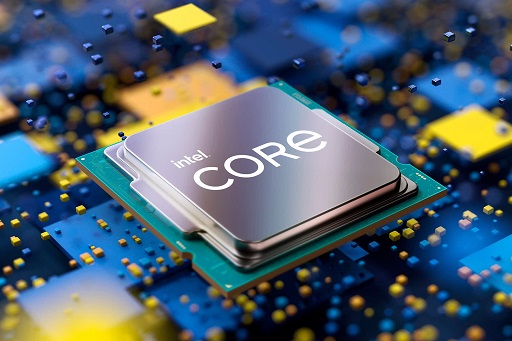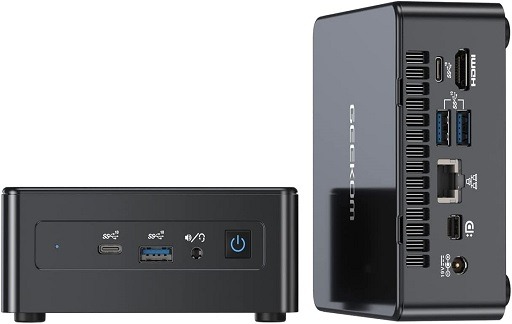Following AMD’s debut of the Ryzen 7000 series in late 2022, Intel has finally made its own next-generation central processing units official. Desktop central processing units dubbed “Raptor Lake” debuted on the market on October 20, 2022, and as is customary in situations like this, there is a great deal of buzz about them.
It should be no surprise that the 13th Generation processors are tougher, quicker, and more powerful than the chips that came before them. At launch, six different K-series central processing units (CPUs) were available; however, Intel has now shown the entire lineup at CES 2023, including chips for gaming and budget laptops, mainstream Ultrabooks, consumer desktops, and more.

Here is a rundown of everything that we are aware of.
The Intel’s 13th Generation Raptor Lake Central Processing Units?
The whole lineup of Intel’s 13th Generation Raptor Lake processors was unveiled at CES 2023 which includes stalwarts such as the HX-, H-, P-, and U-series laptop chips, as well as standard (non-K) and F-series desktop chips, new 35W T-series unlocked lifestyle chips for desktops and N-series processors for budget laptops and desktops. In addition, this includes chips in the HX-, H-, P-, and U-series laptops and desktops.
These new processors are designed to work in conjunction with the 13th Generation K-series desktop CPUs that were made available in October of 2022.
A quick look at Intel’s 13th Generation Raptor Lake
The specifications, particulars, and performance measures cover a large amount of ground. If, on the other hand, you want the cliff notes version, I’ll run down the main points below.
- Up to 24 cores (a combination of P (performance) and E (efficient) cores) and 32 threads
- Intel Thread Director optimizes workloads by helping the OS distribute loads to optimal cores
- Intel Core i9-13900K is the “world’s fastest gaming CPU” with a 5.8GHz clock speed on the P-cores
- DDR4-3200 and DDR5-5600 support
- PCIe 4.0 (up to 4 lanes) and PCIe 5.0 (up to 16 lanes) support
- P-cores, E-cores, graphics, and memory can be overclocked on Z690 and Z790 chipsets
- XMP 3.0 support
- Integrated graphics capable of driving 8K60 HDR video and four simultaneous 4K60 displays
- Intel Killer Wi-Fi 6E
Intel 13th Gen Raptor Lake desktop lineup
We now have access to the entirety of Intel’s 13th Generation Raptor Lake CPU portfolio, which provides us with a clearer picture of how the company has organized its offering. The Raptor Lake central processing units (CPUs) are constructed using the same Intel 7 manufacturing process as the 12th-generation Alder Lake CPUs; however, the performance of the Raptor Lake CPUs has been significantly improved. It is anticipated that these will be the final CPUs constructed using Intel 7 before the transition to Intel 4.
Core i5, Core i7, and Core i9 variations with increasing levels of performance were introduced as part of the K- and KF-series of central processing units (CPUs) last year. Take a peek at the line-up, if you please.
The new Intel 13th Gen Raptor Lake central processing units (CPUs), just like the chips of the 12th generation, include Intel’s hybrid design of performance (P-cores) and efficiency (E-cores) cores. As with the Core i7, the flagship Core i9 processor now has a total of 24 cores, however, just like the Core i7, only 8 of these cores are P-cores. However, the new central processing units (CPUs) have, on average, twice as many E-cores as their respective predecessors. In addition, the clock speeds of each of these cores can be increased on K versions. Additionally, turbo clock rates are enhanced, with up to an additional 600MHz coming from the Core i9 processor.
In addition, the DDR5 support of Intel 13th Gen Raptor Lake CPUs can reach up to 5600, increasing from the 12th Gen’s maximum of 4800. Additionally, it has been shown that DDR4 support will continue to exist up to 3200. Due to the fact that AMD has abandoned DDR4 with the Ryzen 7000, this additional backward compatibility is without a doubt a source of comfort for certain Intel PC builders.
Support for PCIe 4.0 and 5.0 is integrated, and users can access up to 16 lanes of bandwidth with PCIe 5.0. In the end, they are compatible with both the Z690 and Z790 chipsets while still making use of the LGA1700 socket that was used by the previous generation. This also means that the cooler support will remain the same.
The unlocked 125W K-series central processing units were initially marketed for gamers and enthusiasts who are interested in obtaining the maximum amount of available power. Desktop processors from Intel’s 13th generation that consume 65 watts of power are now available, both with and without integrated graphics, for consumers who do not require quite as much power. This category contains a total of 10 different chips, ranging from the Core i3 (of which there are really 58W and 60W versions) all the way up to the Core i9.
There are a total of ten processors, each of which can support up to 24 cores, 32 threads, and a Turbo clock speed of 5.6 GHz. The integrated Intel UHD Graphics 770 is included in the normal models, although the F-series variations do not have any form of integrated graphics. This helps to keep the price down for computers that include a distinct graphics processing unit. It is noteworthy to notice that the Core i5 chips now have both Performance and Efficient cores, whereas the chips of the previous generation (12th Gen) only had P cores.
Intel didn’t stop there; they also released some new T-series desktop CPUs with a thermal design power of 35 watts. These are aimed primarily at the typical desktop user who is looking to reduce their power consumption as much as possible. Even if they won’t have the same amount of power as their 65W competitors, they are still an excellent choice for creative work and productive endeavors.
The T-series chips come in a total of seven different varieties; below is a summary of each one. They start with a Core i3 and go all the way up to a Core i9, and they all include integrated Intel UHD Graphics 770.
Intel’s 13th-generation Raptor Lake mobile product family
With the exception of the more recent HX series, Intel’s 13th-generation mobile processors for laptops haven’t undergone many significant changes from the prior generation. Midway through 2022, HX central processing units will become available on the market. Their performance will be comparable to or even superior to that of some desktops. With the addition of nine additional processors for the 13th Generation range, HX now appears to be a significant component of Intel’s product lineup.
These 55W processors start with the Core i5 and go all the way up to the Core i9, with a maximum of 24 cores, 32 threads, and a Turbo frequency of 5.6GHz. These central processing units have their overclocking unlocked, and they continue to support DDR4 memory (with DDR5 also supported).
The 13th Generation H-series mobile CPUs from Intel are a step down from the 14th Generation H-series mobile processors. Despite having a slightly lower 45W TDP and maximum core count, these processors nevertheless provide excellent performance for gaming and design. These new models start with the Core i5 and go all the way up to the Core i9, which has a total of 14 cores and 20 threads for the most powerful version, the i9-13900HK.
The iterative upgrade that was previously only available for H-series mobile chips has now been rolled out to P- and U-series mobile processors as well. P-series processors start at Core i5 and go all the way up to Core i7, with a maximum of 14 cores and 20 threads, whereas U-series CPUs start at Core i3 and go all the way up to Core i7, with a maximum of 10 cores and 12 threads. The P-series processors consume 28W of power, while the U-series consumes just 15W; this difference allows for longer battery life.
Laptops that meet the criteria for Intel’s Evo platform will continue to meet certain requirements. These requirements include long battery life and strong performance even when the laptop is not plugged in. Additionally, these laptops will support the new Intel Unison technology, which enables users to field calls, respond to text messages, and transfer files from their laptops to their phones.
Intel went on to clarify that certain of its next Core-powered laptops will also come equipped with a component known as a Movidius vision processing unit (VPU). This helps free up the processor while the VPU conducts AI-intensive tasks, and it works in conjunction with Microsoft’s Windows Studio Effects to do this.
Last but not least, Intel is showcasing some brand-new processors from its N-series. Even though they are created using the Intel 7 manufacturing process and feature Gracemont cores, the four new CPUs do not include any Performance cores. Instead, you can obtain as many as eight Efficient cores and eight threads, which results in a significant increase in speed. Intel asserts that the new N-series chips may achieve a performance boost of 28% in application processing and a performance boost of 64% in graphics processing in comparison to the previous generation.
Intel 13th Gen Raptor Lake performance
Before the release of its 13th Generation product, Intel made a number of bold assertions on the performance of the product, particularly in contrast to the 12th Generation and AMD. However, such results were obtained by utilizing AMD Ryzen central processing units from an earlier version. Now that both corporations have made their most recent offerings available, we have a better understanding of the situation.
It turned out that Intel wasn’t exaggerating its performance claims when it came to the Core i5-13600K and the Core i9-13900K, which we discovered in our reviews of those two processors (too much). The performance of a single core continues to lead the pack, which translates to excellent results in activities such as gaming. Even though the additional E-cores are of some assistance when dealing with multi-threaded workloads, the Core i9-13900K remains the undisputed victor in this competition. Not only is it capable of performing well in games, but its multi-core performance can more than compete with AMD’s best and, in some areas, even outperforms it while remaining more affordable.
The Core i9-13900K is marketed as the “world’s fastest gaming CPU,” but if you purchase one with the sole intention of using it for gaming, you will be grossly underutilizing its capabilities. The sheer magnitude of the power that is available will be beneficial to a wide range of users, including professionals, workstations, and creators. Streamers, for instance, are in a good position to consider alternatives to using dual-PC setups. Everything can be done with just this one CPU.
The 13th Generation uses the same Intel 7 manufacturing process as the 12th Generation, so the improvements come from a variety of sources. One of these sources is the doubling of the number of E-cores on each of the new CPUs. These E-cores also offer faster clock rates, with a maximum turbo frequency of 4.3 GHz. A story similar to this one may be told about the P-cores, which have received an improved design, an increase in clock speed of up to 600MHz, and a larger L2 cache. If you’re interested in overclocking, you should know that the P-cores have already achieved above 8 GHz when liquid nitrogen was used.
It is possible that the scalable performance in comparison to the power draw is even more astounding. The Core i9-13900K can produce a performance comparable to that of a 241W Core i9-12900K while only consuming 65W of power, which is almost a fourth of the amount of power that the 12th Generation requires. Intel claims that the Core i9-13900K will perform 37% better than the Core i9-12900K at the same 241W as the maximum turbo on the Core i9-12900K. This improvement occurs when the power is increased.
Despite having a higher core count, the Thermal Design Power (TDP) of the Intel Core i9-13900K remains the same as that of the Core i7-13700K. In our tests, it reached a maximum temperature of 100 degrees Celsius and easily exceeded 300 watts of power consumption. This does not mean that it will not run hot. The Core i5-13600K, on the other hand, is able to easily keep within the limitations of its quoted TDP and does not become so hot that it needs to be throttled.
Intel 13th Gen Raptor Lake Release date and price
The good news is that Intel did not lie about releasing its 13th Generation K-series CPUs before the end of 2022 as they had previously stated they would. On October 20, 2022, they were made available for purchase. Soon, Intel’s new desktop and mobile central processing units (CPUs) will appear in the greatest pre-built gaming PCs and the best laptops. Some of them will also begin appearing in stores as independent purchases that builders may make. There is not yet a date that can be confirmed with absolute certainty, but new laptops (such as the Razer Blade 18) are already on the market and feature the most recent hardware.
There is a range of prices, with the Intel Core i5-13600KF beginning at just less than $300 and its K variant costing slightly more than $300. The top-of-the-line Core i9 begins at approximately $560 in price. The KF variants of the CPUs do not include built-in graphics, which is the primary distinction between them and the K variants. You can make some financial savings if you construct a gaming computer with a dedicated graphics processing unit (GPU).
For additional information, including retailers and prices in major areas, take a look at our guide on where to buy Intel CPUs of the 13th generation.
FAQ about Intel’s 13th Generation processors
Which socket does Intel’s 13th Generation require to be installed?
The LGA1700 CPU socket is utilized by both the 12th Generation Alder Lake and the 13th Generation Raptor Lake CPUs produced by Intel. And because the 13th Generation supports Z690 and Z790, you can keep using the motherboard you already have.
Do CPU coolers for the 12th generation work with the 13th generation of processors?
The CPU coolers that you may have recently purchased for your Alder Lake-based PC build will, in fact, also be compatible with the next-generation Intel processors. This is due to the fact that the LGA1700 socket is also used by the 13th Generation Raptor Lake processors.
Is it possible to use DDR4 RAM modules with Raptor Lake?
Yes, DDR4-3200 is supported; however, the overall performance of the system will be decreased when compared to when DDR5 is used.
Do you require an upgrade to the BIOS for 13th Generation Intel?
Yes, it is very likely that you will need to upgrade the BIOS on your motherboard in order to make use of Intel’s 13th Generation technology. As motherboard manufacturers begin incorporating the most recent updates into their product releases, the likelihood of this occurring will decrease. More information is available in our guide that covers BIOS updates for Intel 13th Gen.
Final Thought
With the release of these new Intel 13th Generation CPUs and the introduction of AMD’s own newest products, this is an excellent moment to be a PC maker. Because this transition from 11th Gen to 12th Gen is not the same as the shift from 10th Gen to 12th Gen, keeping some of the hardware you already have is definitely an advantage. However, there is still room for significant improvement in terms of performance.
The 13th generation of central processing units (CPUs) simply has more of everything: more cores, greater performance, and most crucially, a better ratio of performance to power consumption. In addition, there are certainly more details that really make an impression. Intel Thread Director collaborates with Windows 11 to more effectively divide tasks among available cores and improve overall system performance. Even if you already own a machine from the 12th generation, this is a worthwhile upgrade to get.
Would you like to read more about Intel 13th Gen Raptor Lake-related articles? If so, we invite you to take a look at our other tech topics before you leave!
![]()












